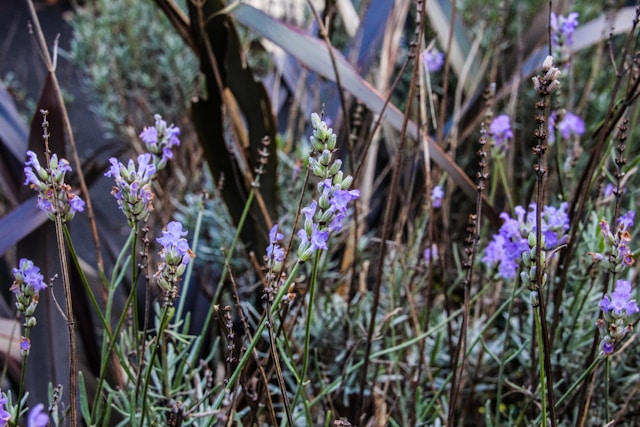Lavender plants have captivated gardeners, home decorators, and herbal enthusiasts for centuries. Known for their vibrant purple blooms and soothing fragrance, lavender plants serve as a stunning addition to any garden or indoor space. But beyond their aesthetic appeal, what truly stands out as the focal point of a lavender plant? This question invites us to delve into the core features of this versatile plant and explore its significance in various contexts.
1. The Defining Beauty of Lavender Blooms
The most striking feature of a lavender plant is undoubtedly its flowers. Lavender blooms are dense spikes of tiny, tubular flowers that range in shades from light lavender to deep purple. These blossoms are the focal point for several reasons:
- Visual Appeal: The vibrant purple flowers create a strong visual contrast against the plant’s silvery-green foliage.
- Scent: Lavender’s iconic aroma emanates primarily from its flowers. This fragrance is both soothing and therapeutic.
- Pollinator Attraction: The flowers attract bees, butterflies, and other pollinators, making them essential for promoting biodiversity.
2. The Role of Aromatic Oils
Lavender’s essential oils are another focal feature, derived mainly from its flowers. These oils contain compounds like linalool and linalyl acetate, which give lavender its calming properties. The oil is widely used in:
- Aromatherapy: Known to reduce stress and anxiety.
- Skincare: Commonly found in creams, soaps, and shampoos.
- Medicinal Applications: Used to alleviate headaches and promote sleep.
3. Structural Elegance: Lavender’s Form and Shape
Lavender plants are known for their tidy, mounding growth habit. Their structure contributes significantly to their overall appeal:
- Compact Growth: Lavender plants form neat, bushy mounds that are perfect for borders or container gardening.
- Height Variations: Depending on the variety, lavender can range from 12 inches to 3 feet tall, adding versatility to landscaping.
- Symmetry: The symmetrical growth pattern draws the eye and adds balance to garden designs.
4. Silvery-Green Foliage: An Underrated Feature
While the flowers often steal the spotlight, the silvery-green foliage of lavender plants plays a vital supporting role:
- Contrast: The soft, muted tone of the leaves complements the vivid purple blooms.
- Texture: The narrow, slightly fuzzy leaves add depth and texture to any planting scheme.
- Resilience: The foliage is hardy, drought-tolerant, and retains its beauty throughout the year.
5. Lavender in Landscaping and Design
The focal point of lavender extends beyond its physical attributes. Its role in landscaping and design highlights its versatility:
- Pathway Borders: Lavender’s compact growth and aromatic flowers make it an ideal border plant.
- Meditation Gardens: Its calming presence makes it a favorite in spaces designed for relaxation.
- Rock Gardens: Lavender’s drought tolerance pairs well with xeriscaping principles.
6. Cultural and Historical Significance
Lavender’s symbolic meanings and historical uses add another layer to its focal appeal:
- Symbolism: Lavender represents purity, devotion, and calmness in many cultures.
- Historical Use: Ancient Egyptians used lavender in mummification, while Romans utilized it for baths and perfumes.
- Modern Celebrations: Lavender festivals celebrate its beauty and utility in regions where it thrives.
7. Lavender Varieties: Highlighting Diversity
Different varieties of lavender bring unique characteristics to the table:
- English Lavender: Known for its strong fragrance and cold tolerance.
- French Lavender: Distinctive for its jagged foliage and milder scent.
- Spanish Lavender: Recognized by its rabbit-ear-like bracts.
Each variety offers a unique focal point, catering to specific aesthetic and functional preferences.
8. The Practical Benefits of Lavender
Lavender’s utility further solidifies its role as a focal plant:
- Pest Control: Lavender repels mosquitoes, moths, and other pests.
- Culinary Uses: Lavender is used to flavor desserts, teas, and savory dishes.
- Dried Arrangements: Dried lavender retains its fragrance and beauty, making it popular for bouquets and sachets.
9. Seasonal Interest and Longevity
Lavender’s appeal isn’t limited to its blooming season:
- Year-Round Beauty: The evergreen foliage ensures that lavender remains attractive even when not in bloom.
- Long Blooming Period: Many lavender varieties bloom from late spring to early fall.
- Dried Flowers: Lavender’s blooms can be preserved, extending their use and visual appeal.
10. Lavender Care: Maintaining Its Focal Appeal
To keep lavender as a stunning focal point, proper care is essential:
- Sunlight: Lavender thrives in full sun, requiring at least 6 hours daily.
- Soil: Well-drained soil is crucial to prevent root rot.
- Pruning: Regular pruning encourages bushy growth and extends the plant’s lifespan.
- Watering: Lavender prefers dry conditions, with watering needed only during prolonged droughts.
Conclusion: Lavender’s Multifaceted Focal Points
The focal point of a lavender plant lies not in a single feature but in the harmonious combination of its flowers, fragrance, form, and functionality. Whether used as a centerpiece in gardens, a source of essential oils, or a symbol of tranquility, lavender continues to captivate and inspire. Its timeless beauty and practical benefits make it an enduring favorite among plant enthusiasts worldwide.

